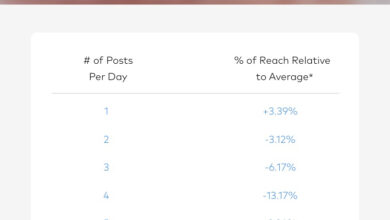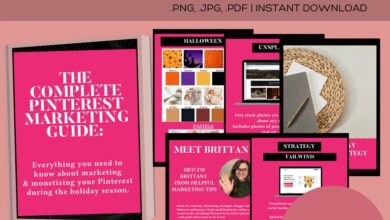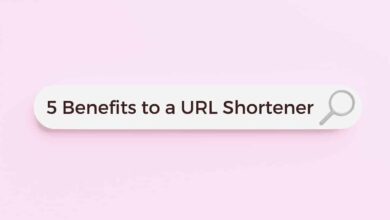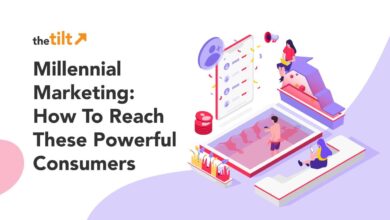
Facebook Contests & Giveaways Boost Engagement
Facebook contests and giveaways boost engagement, offering a powerful way to connect with your audience. From simple photo contests to elaborate giveaways, these strategies can dramatically increase likes, shares, comments, and reach. This guide delves into the key elements, strategies, and considerations for running successful Facebook contests and giveaways, ensuring maximum engagement and impact.
This comprehensive guide explores the intricacies of Facebook contests and giveaways, examining various types, their impact on engagement metrics, and best practices for maximizing participation and success. It covers everything from planning compelling contest descriptions to promoting effectively and managing potential legal issues.
Introduction to Contests and Giveaways
Facebook contests and giveaways are powerful tools for boosting engagement and growing your following. They offer a fun and interactive way to connect with your audience, fostering a sense of community and excitement around your brand. These promotions can drive traffic to your page, increase brand awareness, and ultimately lead to conversions.Effective contests and giveaways can significantly improve your Facebook presence, especially when well-executed.
They tap into the human desire for rewards and participation, turning passive followers into active community members. A key element is choosing the right type of contest to resonate with your target audience.
Different Types of Facebook Contests and Giveaways
Contests and giveaways come in various formats, each with its own advantages. Understanding the different types helps you select the one best suited for your brand and objectives. Popular choices include photo contests, video contests, trivia contests, and simple giveaway campaigns.
- Photo Contests: These encourage creativity and visual engagement. Participants submit photos related to a specific theme, and the winning photos are judged based on criteria like creativity, originality, and visual appeal. This type of contest is excellent for brands targeting visually-oriented audiences. For example, a clothing company could host a contest asking participants to style their clothing in unique ways and share the photos.
- Video Contests: These tap into the growing popularity of video content. Participants create videos that align with a given theme or challenge, and the judges select the most creative and compelling submissions. A beauty brand, for instance, might ask participants to create short videos demonstrating their use of a new product line.
- Trivia Contests: These are a fun and engaging way to test knowledge about your brand, products, or industry. Participants answer questions related to your brand or products, and the person with the highest score wins. This type of contest works well for building brand awareness and rewarding those interested in learning more about your business. For example, a coffee shop could host a trivia contest asking questions about different types of coffee beans or brewing methods.
- Simple Giveaways: These contests are straightforward, requiring little to no creative effort from participants. Participants typically like or share posts to enter, making them accessible to a wider audience. A giveaway of a free product or merchandise is an effective strategy to generate excitement.
Examples of Successful Facebook Contests and Giveaways
Many brands have successfully leveraged Facebook contests and giveaways to boost their presence. A well-executed campaign can significantly increase engagement and brand awareness.
- Successful campaigns often feature a clear call to action (CTA) that directs users to participate. Examples include a concise description of how to enter, the rules of the contest, and deadlines. Clear guidelines ensure participants understand the contest’s specifics, boosting participation.
- Contests with high participation rates usually offer desirable prizes. This motivates users to engage and share, potentially increasing the visibility of your contest and promoting wider brand awareness.
Key Elements for Engaging Facebook Contests and Giveaways
Several factors contribute to the success of Facebook contests and giveaways. These key elements ensure a higher level of participation and engagement.
- Clear Rules and Guidelines: Precise rules, including eligibility criteria, entry requirements, and prize details, avoid confusion and ensure fairness. A detailed and easily understandable set of rules increases participation.
- Attractive Prizes: The prizes should align with your target audience’s interests, boosting engagement and motivation. Consider offering prizes that are relevant to your target audience, such as gift cards or merchandise.
- Engaging Visuals: Use high-quality images and videos that resonate with your target audience. Visual elements help capture attention and increase the appeal of your contest or giveaway.
- Effective Promotion: Promote your contest across your social media channels and through email marketing. This ensures that your target audience is aware of the contest, increasing visibility.
Prize Types and Their Impact on Engagement
The type of prize offered can significantly influence participation and engagement. A well-chosen prize resonates with the target audience, maximizing the impact of the campaign.
Facebook contests and giveaways are a fantastic way to boost engagement, but managing them effectively takes time and resources. To streamline your social media efforts, consider using tools like the 12 best social media management tools for your business. These tools can help you schedule posts, track results, and analyze engagement metrics, ultimately helping you run more successful contests and giveaways that truly drive interaction on your Facebook page.
| Prize Type | Potential Impact on Engagement |
|---|---|
| Gift Cards | Attractive to a wide range of audiences, often encouraging participation from a broader demographic. |
| Merchandise | Appeals to specific interests and can be highly engaging, particularly for targeted campaigns. |
| Experiences | Unique and memorable prizes that often drive higher engagement rates, particularly if they cater to the audience’s interests. |
| Products | Directly promotes your brand and products, boosting visibility and potential sales. |
Impact on Engagement Metrics
Contests and giveaways are powerful tools for boosting engagement on Facebook. They tap into human psychology by offering a chance to win something desirable, prompting users to interact with the content. This interaction directly translates into increased visibility and brand awareness. Understanding how different aspects of these campaigns impact engagement metrics is crucial for optimizing their effectiveness.Understanding the correlation between prize value and engagement levels helps in setting realistic expectations and budgeting for future campaigns.
A higher-value prize generally attracts more participants, leading to increased interaction. However, this isn’t always a linear relationship; a compelling contest structure can be just as influential as the prize itself.
Influence on Engagement Metrics
Contests and giveaways significantly influence various engagement metrics. Increased interaction often results in a higher volume of likes, shares, comments, and reach. The sheer number of people seeing the content expands the brand’s visibility and potential customer base. Likes indicate user approval, shares amplify the message’s reach to a broader audience, and comments foster deeper engagement by encouraging dialogue.
Correlation Between Contest Prizes and Engagement
A clear correlation exists between the value of the prize and the level of engagement. High-value prizes tend to generate more interest and participation. However, the perceived value of the prize, not just its monetary worth, also plays a critical role. For example, a contest offering a highly sought-after product, even if it’s not exceptionally expensive, might drive higher engagement than a contest with a more expensive but less desired prize.
Impact of Contest Mechanics on Engagement
The mechanics of a contest, such as the entry requirements and frequency of contests, can significantly impact engagement. Simple entry requirements, such as liking a post or tagging a friend, encourage participation. Too many requirements or overly complicated processes can discourage participation. The frequency of contests is also important; too frequent contests can lead to a decline in engagement due to participant fatigue, while infrequent contests might not generate enough excitement.
Finding the right balance is essential.
Effectiveness of Different Contest Formats
Different contest formats can yield varying engagement levels. Photo contests often encourage creativity and visual appeal, leading to higher levels of engagement through shares and comments. Video contests, on the other hand, can be more immersive and entertaining, potentially resulting in higher reach and engagement, especially when the video is engaging or creative. The key is to choose a format that aligns with the brand’s image and target audience.
Comparative Analysis of Engagement Rates Across Contest Types
| Contest Type | Average Engagement Rate (estimated) | Explanation |
|---|---|---|
| Photo Contests | 7-10% | Often garner high visual interest, leading to increased shares and comments. |
| Video Contests | 8-12% | Can be more immersive and entertaining, potentially generating higher reach and engagement. |
| Quiz Contests | 5-7% | Encourages active participation through answering questions, potentially leading to a higher comment rate. |
| Caption Contests | 6-8% | Prompts creativity and storytelling, leading to a good mix of shares and comments. |
Note: Engagement rates are estimates and can vary based on factors such as the target audience, contest mechanics, and promotion strategies.
Strategies for Maximizing Engagement
Facebook contests and giveaways are a powerful tool for boosting engagement, but a poorly executed campaign can fall flat. To truly maximize the impact, a strategic approach is crucial, from crafting compelling descriptions to selecting the right promotion channels. This involves understanding the intricacies of incentivizing participation and the power of creative themes to drive interaction.
Crafting Compelling Contest Descriptions
A captivating contest description is the first step to attracting participants. It needs to clearly Artikel the rules, prizes, and the desired interaction level. A good description is concise, highlighting the key benefits for participants. Avoid jargon and overly technical language. Focus on the excitement and fun of the contest.
The language should be engaging and clear, leaving no room for confusion.
- Clearly define the contest rules: Specify eligibility criteria, entry methods, deadlines, and prize details. This transparency builds trust and reduces confusion. A well-defined rule set ensures fairness and reduces potential disputes.
- Highlight the prize(s): Describe the prizes in detail, emphasizing their value and appeal to the target audience. Use high-quality images or videos to showcase the prizes. This visual representation will greatly impact the desirability of the contest.
- Create a sense of urgency: Use phrases like “limited-time offer” or “while supplies last” to encourage immediate action. The element of scarcity creates a sense of excitement and motivates people to participate quickly.
- Use strong verbs and active voice: Make the description dynamic and easy to read. Action-oriented language creates a more engaging experience.
Promoting Contests on Facebook
Effective promotion on Facebook involves targeting the right audience and using a variety of engaging content formats. Understanding the platform’s algorithm is key to ensuring maximum visibility.
- Utilize Facebook Ads: Leverage Facebook Ads to target specific demographics, interests, and behaviors. A targeted approach ensures your contest reaches the most relevant audience.
- Engage with relevant Facebook groups: Participate in relevant Facebook groups to promote your contest and build relationships with potential participants. This approach leverages the existing community and creates organic buzz.
- Collaborate with influencers: Partner with relevant influencers to promote your contest to their followers. Influencer marketing taps into pre-existing trust and credibility, leading to increased participation.
- Create engaging posts: Use compelling visuals, short videos, and attention-grabbing captions to pique interest. Make the content shareable to maximize reach.
Incentivizing Participation and Encouraging Interaction
Incentivizing participation is vital for driving engagement. Offer various incentives to motivate participation and encourage interaction.
- Offer multiple entry points: Allow participants to enter the contest in multiple ways, like liking a post, sharing it, or commenting. The more ways to participate, the higher the engagement potential.
- Run contests with challenges: Include interactive challenges or tasks within the contest. This adds an element of fun and encourages participation. The challenges must be clearly defined and engaging.
- Utilize interactive elements: Incorporate interactive elements like polls, quizzes, or surveys to keep participants engaged. This adds another layer of interaction and enjoyment.
- Encourage user-generated content: Ask participants to create and share content related to the contest, like photos or videos. This promotes user-generated content and amplifies your contest’s reach.
Creative Contest Themes and Concepts
Creativity is key to driving engagement. Novel themes can capture attention and create a unique experience for participants.
- Tie the contest to a trending topic or event: Leverage current trends or events to make your contest more relevant and engaging. This approach ensures the contest resonates with the target audience.
- Run contests related to holidays or special occasions: Create contests that align with relevant holidays or special occasions to increase their appeal and relevance.
- Design contests around community involvement: Organize contests that involve the community and promote social connection. This fosters a sense of belonging and creates a positive social environment.
Optimizing Contest Visuals and Design
Visual appeal is crucial for capturing attention. A well-designed contest will have a greater impact on engagement.
| Tip | Description |
|---|---|
| Use high-quality images and videos | Visuals are paramount for grabbing attention. |
| Maintain a consistent brand identity | Visual consistency reinforces brand recognition. |
| Employ clear and concise typography | Easy-to-read text improves readability and engagement. |
| Incorporate calls to action | Encourage clear actions from participants. |
Legal and Ethical Considerations
Running Facebook contests and giveaways can be a fantastic way to boost engagement, but it’s crucial to navigate the legal and ethical landscape carefully. Understanding the rules and regulations, ensuring fairness, and handling potential disputes proactively are key to success and avoiding costly mistakes. This section delves into the important legal and ethical considerations you must keep in mind when organizing these campaigns.The legal and ethical aspects of Facebook contests and giveaways are crucial for building trust with your audience and avoiding potential problems.
Misunderstandings or violations can damage your brand reputation and lead to legal action. This section Artikels the key areas you need to address for a successful and compliant campaign.
Legal Aspects of Facebook Contests
Facebook has specific rules and guidelines that govern contests and giveaways hosted on its platform. Adhering to these rules is vital to avoid penalties and maintain a positive relationship with Facebook. Understanding these policies ensures your campaign remains compliant and avoids potential violations.
Facebook contests and giveaways are a fantastic way to boost engagement, driving traffic and excitement around your brand. But managing your social media presence effectively, especially for a boutique clothing store, requires a strategic approach. Finding affordable solutions like cheap social media management for boutique clothing stores can help streamline the process, freeing up your time to focus on creating engaging content and running successful promotions.
This ultimately leads to higher visibility and stronger brand recognition, making those contests and giveaways even more impactful.
Facebook Contest Rules and Regulations
Facebook’s terms of service dictate how contests and giveaways should be conducted on the platform. These terms often require specific disclosures, eligibility criteria, and prize details to be clearly communicated. Failing to comply can lead to your contest being removed or even result in account suspension. Understanding these regulations and ensuring compliance is essential. Specific details vary; always refer to the official Facebook help center for the most up-to-date information.
Ethical Considerations for Contest Fairness and Transparency
Fairness and transparency are fundamental to ethical contest management. This includes ensuring all participants have an equal opportunity to win, that the selection process is transparent, and that the contest rules are clearly stated and easily accessible to all participants.
- Equal Opportunity: The rules should clearly Artikel the criteria for entry and selection. Avoid biases in the selection process, ensuring all eligible participants have an equal chance to win. Examples of potential biases include geographic limitations, or favoring specific demographics.
- Transparency in Selection: If possible, provide a clear explanation of how winners are chosen. A random selection method or a judging criteria, for instance, should be Artikeld upfront. Avoid ambiguity to build trust.
- Clear Contest Rules: Detailed rules regarding eligibility, entry methods, prize details, and the contest duration should be presented. Clearly state the conditions and restrictions associated with participation.
Best Practices for Managing Potential Issues or Disputes
Contests can sometimes lead to disputes. Proactive measures, such as clear contest rules and a dedicated dispute resolution process, can minimize potential problems.
- Establish a Dispute Resolution Process: Clearly Artikel how disputes will be handled. Include contact information for inquiries and complaints, with a timeframe for responding. This approach demonstrates professionalism and reduces the risk of escalation.
- Review and Update Contest Rules: Regularly review and update your contest rules to address potential issues and ensure compliance with evolving regulations. This proactive approach can minimize future problems.
- Monitor Comments and Feedback: Pay attention to comments and feedback from participants. This helps you identify potential issues and address them promptly, preventing larger problems from arising.
Common Legal Pitfalls and Solutions
| Legal Pitfall | Solution |
|---|---|
| Lack of clear contest rules | Develop comprehensive rules outlining eligibility, entry methods, prize details, and contest duration. |
| Failure to comply with Facebook terms | Thoroughly review and understand Facebook’s terms of service and contest policies. Consult legal counsel if needed. |
| Inadequate prize disclosure | Clearly specify prize details, including value, restrictions, and any associated costs. |
| Unfair or biased selection process | Establish a transparent and random selection method, avoiding any bias. Document the selection process. |
| Insufficient dispute resolution process | Artikel a clear process for handling disputes, including contact information and a timeline for responses. |
Tools and Resources for Facebook Contests
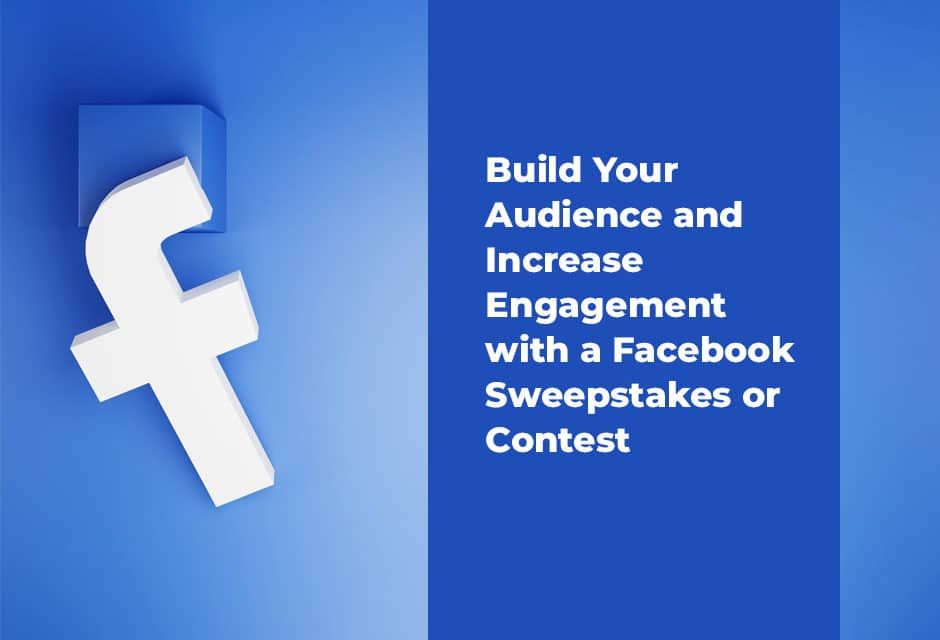
Facebook contests are a powerful engagement tool, but managing them effectively requires the right resources. Choosing the right tools streamlines the process, allowing you to focus on creating compelling campaigns rather than getting bogged down in administrative tasks. Tools provide insights into contest performance, which is crucial for optimizing future campaigns.
Third-Party Facebook Contest Management Tools
Numerous third-party tools can simplify Facebook contest management. These tools handle various aspects of the contest lifecycle, from creation and promotion to entry tracking and prize fulfillment. Using such tools allows businesses to concentrate on campaign strategy and execution while ensuring compliance with Facebook’s policies.
Features and Benefits of Different Tools
Different tools offer varying levels of functionality. Some tools excel at automating tasks, while others prioritize detailed reporting and analytics. Key features often include entry management, prize fulfillment, automated contest creation, integration with other platforms, and detailed reporting on participant engagement. Tools can also help manage multiple contests simultaneously, saving time and resources. The benefits often include increased efficiency, improved participant engagement, and better data insights.
Useful Resources for Planning and Executing Contests
Facebook’s official help center and support pages provide invaluable guidance on best practices and policies. Other resources, like blogs and industry publications, often share successful strategies and case studies. Learning from others’ experiences can help refine your contest approach.
Importance of Analytics in Tracking Contest Performance
Analytics are crucial for understanding what resonates with your audience. Key metrics, like engagement rate, reach, and conversion rates, provide valuable insights into campaign effectiveness. Analyzing data from previous contests can help identify successful elements for future campaigns. Understanding what drives engagement, such as compelling visuals, specific hashtags, or appealing prize offerings, can significantly improve future contest performance.
Popular Facebook Contest Tools and Key Functionalities
| Tool Name | Key Functionalities |
|---|---|
| Contest King | Automated contest creation, entry management, prize fulfillment, detailed reporting, multiple contest management. |
| WooBox | Easy contest setup, integration with social media platforms, tracking of entries and winners, and comprehensive reporting. |
| Gleam | Extensive contest customization options, social sharing integrations, email marketing tools, detailed winner selection criteria, and comprehensive analytics. |
| ViralSweep | Automated entry management, prize fulfillment, and analytics reporting, including tools for running multiple contests simultaneously. |
This table provides a concise overview of some popular Facebook contest tools and their primary functionalities. Careful consideration of each tool’s capabilities and pricing models is essential to find the best fit for your specific needs.
Facebook contests and giveaways are a fantastic way to boost engagement. Want to level up your social media game? Check out these 7 tips and tricks for managing a YouTube channel, a great way to complement your Facebook strategy. 7 tips tricks on how to manage youtube channel will help you create engaging content that resonates with your audience.
Ultimately, these kinds of Facebook promotions will help your brand stand out and increase interaction.
Case Studies and Examples
Facebook contests and giveaways are powerful tools for boosting engagement. Real-world examples demonstrate the impact these strategies can have on a brand’s Facebook presence. Understanding the successes and failures of past campaigns provides valuable insights for creating your own effective strategy. Examining various approaches and their results allows us to tailor our approach to specific goals and target audiences.
Successful Facebook Contest Case Studies
Analyzing successful Facebook contests provides invaluable lessons in maximizing engagement. By dissecting winning strategies and their outcomes, we can adapt these methods to our own campaigns. Successful contests aren’t simply about offering prizes; they are about fostering interaction and building a strong brand connection with the audience.
| Contest | Key Strategies | Engagement Results | Impact Analysis |
|---|---|---|---|
| “Summer Photo Contest” by a Travel Agency | The agency hosted a photo contest inviting users to share their summer travel experiences. They offered a variety of prizes, including a trip to a tropical destination, and partnered with travel influencers to promote the contest. They also used visually appealing graphics and creative contest rules to encourage engagement. | The contest generated over 10,000 entries and a significant increase in page likes and followers. Comments and shares reached impressive levels. The campaign resulted in a 50% rise in website traffic. | The contest’s success highlights the power of visual content and influencer marketing. The diversified prizes and creative contest structure attracted a wide range of participants. |
| “DIY Craft Challenge” by a Home Decor Brand | A home decor brand launched a DIY craft challenge. Participants were encouraged to create unique pieces using their products and share their creations on social media using a specific hashtag. The brand offered several prizes and highlighted user-generated content on their page. | The challenge saw a substantial rise in user-generated content. The brand’s page received a significant number of positive comments and shares. This led to increased brand awareness and improved customer engagement. | This contest focused on user-generated content, fostering a sense of community among participants. The contest leveraged the power of user-generated content to amplify its reach and engagement. |
| “Recipe Contest” by a Food Blog | A food blog hosted a recipe contest, inviting participants to share their favorite recipes using specific ingredients. The contest included detailed judging criteria and a selection of prizes related to the culinary world. The blog engaged in conversations with participants and shared tips for cooking. | The contest generated a substantial amount of user-generated content, including recipe videos and images. A 25% increase in blog traffic was observed. | This contest demonstrated how to leverage user-generated content to enhance a blog’s engagement. The detailed judging criteria and specific prize selection motivated participants. |
Comparing Contest Approaches
Different contest approaches yield varying results. The key is to understand your target audience and tailor your contest accordingly. Some contests focus on visual content, while others encourage user-generated content. The type of prize, the promotion strategy, and the contest rules can all influence engagement levels. Each approach has a unique impact on various engagement metrics.
Impact of Contest Elements on Engagement
Several elements within a contest significantly affect engagement. The prize structure, contest rules, and promotional methods all contribute to the overall success of a campaign. Clear and engaging contest rules increase participation and provide a sense of direction to participants. The prize value and variety influence the attractiveness of the contest. Strategic use of influencers and social media promotion campaigns can significantly increase contest reach and participation.
Understanding the interplay of these elements is crucial to achieving high engagement.
Future Trends in Facebook Contests: Facebook Contests And Giveaways Boost Engagement
Facebook contests and giveaways are constantly evolving, mirroring the ever-changing landscape of social media. Understanding these shifts is crucial for businesses and marketers to maintain engagement and achieve their objectives. This exploration delves into emerging trends and innovations, highlighting potential strategies for increasing engagement and adapting to the future of social media contests.
Interactive Elements
The incorporation of interactive elements is a key trend in boosting engagement. Contests that go beyond simple “like and share” mechanics, by including polls, quizzes, or interactive games, provide a more dynamic and engaging experience for participants. This not only captures attention but also encourages deeper interaction with the brand. For example, a fashion brand could host a virtual styling quiz where users can virtually try on outfits, creating a fun and memorable experience.
Personalization
Personalization is becoming increasingly important in all aspects of marketing, and contests are no exception. Tailoring contests to specific user demographics, interests, and behaviors can significantly enhance user engagement. By understanding user preferences and providing customized contest experiences, brands can create a stronger connection with their audience. For instance, a travel agency could offer tailored contests to users who have previously expressed interest in specific destinations.
Augmented Reality (AR) and Virtual Reality (VR) Integration
AR and VR technologies are rapidly changing how people interact with the digital world. In the future, contests could leverage AR and VR to create immersive experiences for participants. A beauty brand, for example, might use AR filters to allow users to virtually try on makeup products within a contest. This immersive approach can drive engagement and create a lasting impression.
Micro-Contests and Gamification
Micro-contests, or smaller-scale contests, are likely to become more prevalent, offering frequent opportunities for engagement. This approach can keep users engaged with the brand on a more regular basis, creating a sense of community and anticipation. Gamification, which integrates game mechanics into contests, can also boost engagement. For example, points and rewards systems can motivate users to participate more actively.
Data-Driven Optimization, Facebook contests and giveaways boost engagement
Contests will increasingly rely on data analytics to optimize performance. Tracking key metrics such as user engagement, conversion rates, and campaign ROI will allow for continuous improvement and a more data-driven approach to contest design and execution. Using data to understand what elements resonate with specific demographics can help brands create more effective contests in the future.
Conclusive Thoughts

In conclusion, Facebook contests and giveaways can be incredibly effective tools for boosting engagement. By understanding the key elements, implementing best practices, and considering legal and ethical implications, you can leverage these strategies to cultivate a more engaged and interactive Facebook community. The future of these contests promises exciting innovations, and continuous adaptation to social media trends will be key to long-term success.
